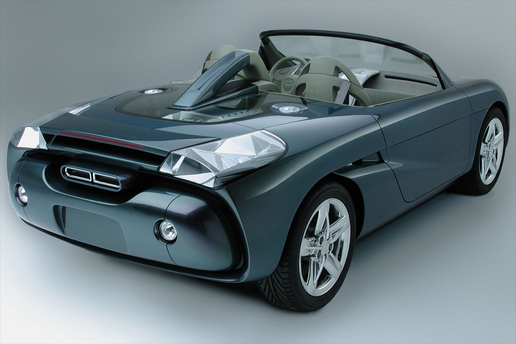Hyundai marked the 100th anniversary of the Chicago Auto Show by unveiling the HCD-6 Roadster concept, representing Hyundai's inaugural mid-engine prototype. The roadster boasted a 215 horsepower, 2.7-liter V-6 engine, a 6-speed manual gearbox, and 4-wheel independent suspension. A transparent cover elegantly showcased the mid-mounted engine. Crafted by Hyundai's design studio team in Fountain Valley, California, this 2-seat roadster introduced innovative features such as deeply-sculpted side air intake systems, detachable floating front and rear carbon fiber bumpers, 18-inch wheels with run-flat tires, and projected beam headlights synchronized with the front wheels.
The visually striking body was adorned in a 3-stage Mysteria paint by DuPont, allowing the HCD-6 to undergo a visual transformation from teal to dark purple. The roadster's exterior seamlessly blended form and function, emphasizing aerodynamics and a sporty aesthetic. The functional interior featured sporty stretch fabric upholstery, complemented by smooth leather and metal accents.
Hyundai strategically targeted the two-seat roadster market with the HCD-6, positioning it as an "affordable exotic car." David Weber, Vice President of Marketing at Hyundai, highlighted the car's appeal to those who seek a vehicle that is not only enjoyable to drive but also a visual delight. The HCD-6 was positioned as a car that resonates with both the young-at-heart and baby boomers who view their vehicles as expressions of freedom.
Designed by the HATCI California Design studio in Fountain Valley, California, near Newport Beach, the HCD-6 featured distinctive elements such as detached floating carbon fiber bumpers, a transparent engine cover, and high-mount exhaust. One notable feature was the deeply sculpted side air intake system, serving both aerodynamics and engine cooling functions. This concept, the sixth from Hyundai's California design studio, embodied a bold vision for sporty cars, although no plans for mass production were announced.
Source & Images: Hyundai












































